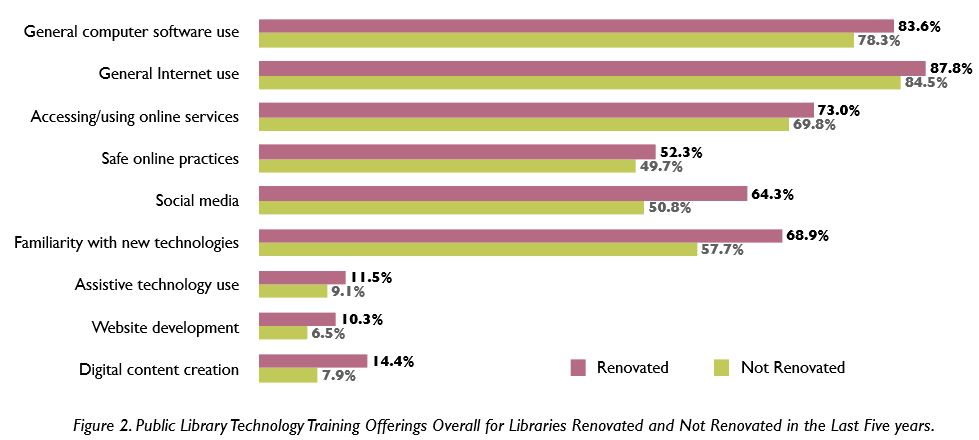
The Digital Inclusion Survey recently released new data and issue briefs that deal with a wide range of technology based services in public libraries, from access to e-government. The survey tracks trends and advances in the “access, adoption, and application” of digital resources in their effort to promote the importance of equitable technology access to the future of communities.
Their issue brief on digital literacy reports that 9 out of 10 public libraries in the U.S. (90%) at least offer training in general Internet usage. In fact, there is little gap in the number of libraries that provide basic technology services in suburban areas (93%) and those that do so in rural areas (87%).
Public libraries today have an average of 19 public access computers (including laptops), and many trainings now include workforce development and mobile technologies. Overwhelmingly though, libraries favor informal point-of-use interactions – four-fifths (79%) of libraries indicate they use this method, compared to the 39% that offer formal trainings.
Yet public libraries are not without challenges in providing digital literacy service to their communities. A lack of infrastructure, funding, and staff expertise can all be major hurdles. For example, the Digital Inclusion Survey found a direct association between libraries that had undergone major renovations in the past year (21% of public libraries) and their ability to provide technology training. Attention to the space of the library itself, it seems, may be an indicator of the energy and assets put into emerging digital services.
You can access all of the Digital Inclusion Survey’s 2015 issue briefs here.
Note: This post is part of our series, “The Weekly Number.” In this series, we highlight statistics that help tell the story of the 21st-century library.